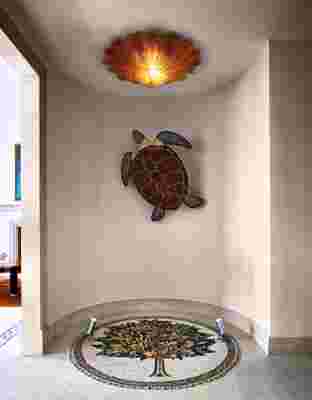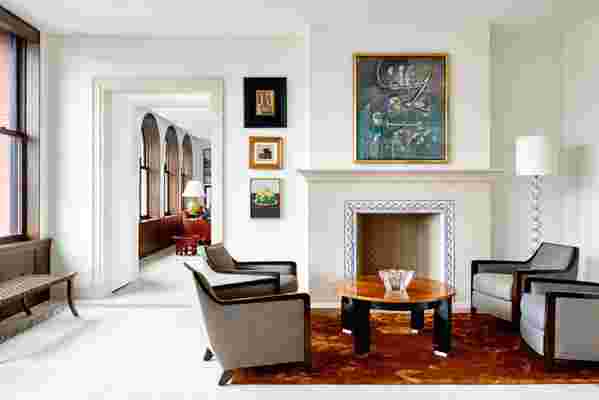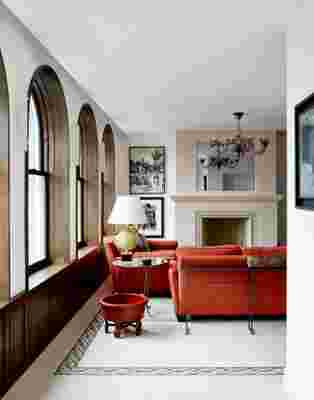When you step into the apartment on Great Jones Street of real estate developer Don Capoccia and his husband, Tommie Pegues, you might not realize that their digs actually stretch across two New York City buildings. “It’s very interesting, architecturally,” says Alexander Gorlin, a friend of the couple, and the architect on the project. The couple actually lived in the highest unit of a quintessentially New York prewar building in the area, and Capoccia built an adjacent apartment house, in order to eventually occupy its top floor, as well, by combining them. “We cut open the wall between the existing building to create this triplex apartment,” Gorlin says.
According to Gorlin, the two-year-long renovation and build was actually pretty seamless. Once the structural work was executed, the challenge was to make two very different spaces into one. The existing building, though “a wreck,” as Gorlin describes, carried that 100-year-old charm we so often see in the city; and the new building, by its nature, was modern. Gorlin said they needed to bring the old apartment back to basics, so when the two were connected, they could maintain a sense of unity throughout; to, “conjure the old and relate it to the new,” he says.

The entry foyer in the apartment features a glass light fixture from Nuovo Venier in Murano, Italy, mosaic-tile floor, and turtle wall sculpture.
They started with finishes. “Luxurious materials were important,” says Gorlin. One of the main threads that connect the spaces of the apartment is the handsome and rare finishes used throughout—Jordanian limestone on the floors and walls of the master bath; a particularly elaborate Moroccan ceiling; limestone flooring—the homeowner’s favorite design element of the space. “It feels so wonderful under our feet!” says Pegues. The architect incorporated elements that felt original to the old building’s framework, like wooden details on the existing arched windows, and a Venetian stone casing on all of the doors. “It’s a balance of elaborate gestures or surprises, within a strong architectural frame,” Gorlin says.
The furniture selection furthers this notion. Pegues and Capoccia travel well and often. The finishes in the apartment were all secured during the pair’s excursions, as well as the Murano chandeliers that dangle in just about every room. To tie it all together, the homeowners called on Deborah Berke Partners for the interior design. “They wanted something bold, but also balanced” says Caroline Wharton Ewing, senior principal at Deborah Berke Partners. “We used bold colors and rich fabrics, but generally avoided patterns and focused on larger pieces in simple arrangements.”
In the end, though the space is certainly well-appointed, it feels cozy and serene. As for the homeowners: “The home is exactly what we wanted," says Pegues. “It represents our love for the world, people, travel, family, and our love for each other.”


RELATED: This Reimagined Tribeca Loft Is a Sculptural Backdrop for Megawatt Design
